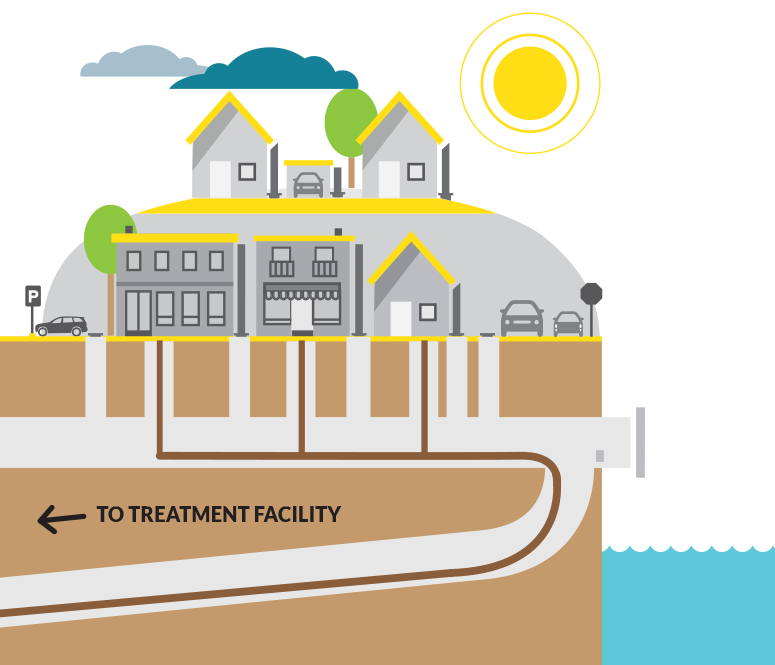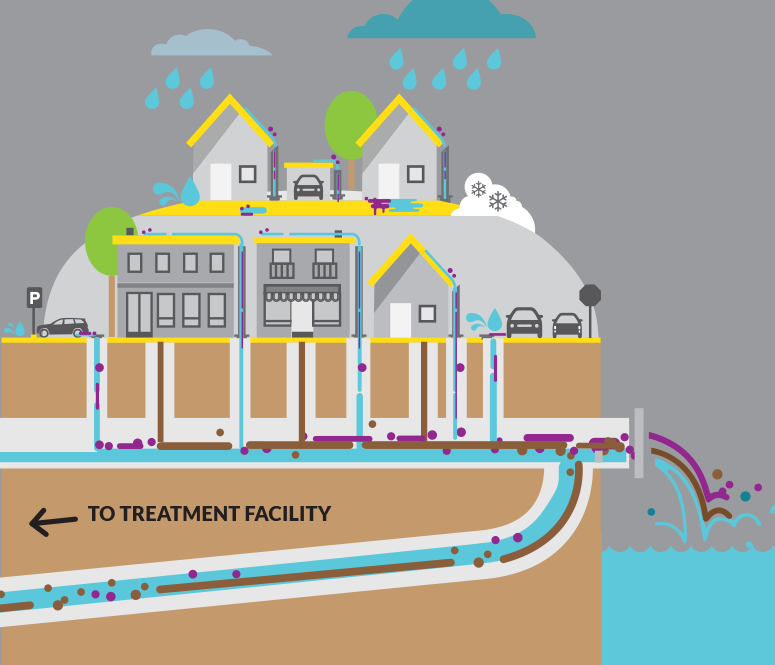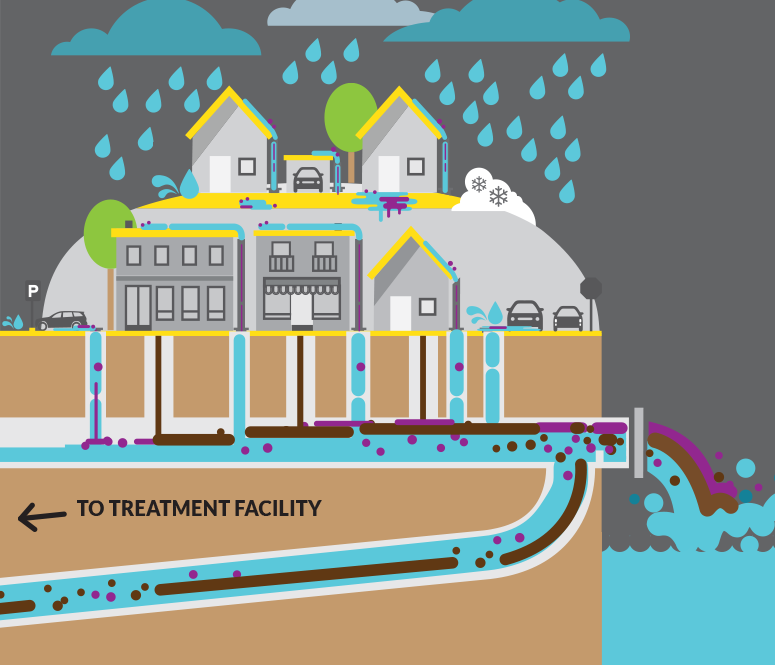 Our Stormwater Challenge
Our Stormwater Challenge
Like all U.S. cities, Buffalo faces a stormwater challenge. Water generated from rain and snowmelt (stormwater) needs to be moved off our streets and buildings to protect health and safety. We typically do this by directing it to our sewer system, which is designed to discharge excess waste and stormwater into local waterways during wet weather. These sewer overflow events can impair local water quality by dumping pollutants and waste into our waterways.
 In dry weather, our combined sewer system only has to carry wastewater and sewage from our homes and businesses to the sewage plant where it all gets treated before being released into the Niagara River.
In dry weather, our combined sewer system only has to carry wastewater and sewage from our homes and businesses to the sewage plant where it all gets treated before being released into the Niagara River.
 In moderate precipitation events with 1 inch or less of rain or snowmelt, stormwater flows into the combined sewer system and mixes with wastewater. This can lead to sewer overflow events where untreated water gets released into local waterways.
In moderate precipitation events with 1 inch or less of rain or snowmelt, stormwater flows into the combined sewer system and mixes with wastewater. This can lead to sewer overflow events where untreated water gets released into local waterways.
Green infrastructure is a great solution for moderate precipitation events. Most, if not all, of these events could be taken care of by techniques that absorb, collect, or divert water when it rains or snow melts.
 In extreme precipitation events with more than 1 inch of rain or snowmelt, large volumes of untreated stormwater runoff carrying pollutants from impervious surfaces drain into the combined sewer system, mixing with wastewater before being released into local waterways.
In extreme precipitation events with more than 1 inch of rain or snowmelt, large volumes of untreated stormwater runoff carrying pollutants from impervious surfaces drain into the combined sewer system, mixing with wastewater before being released into local waterways.
Green infrastructure can be a big part of the solution in extreme events. We also need to invest in underground infrastructure to prevent sewer overflows in extreme precipitation events.

